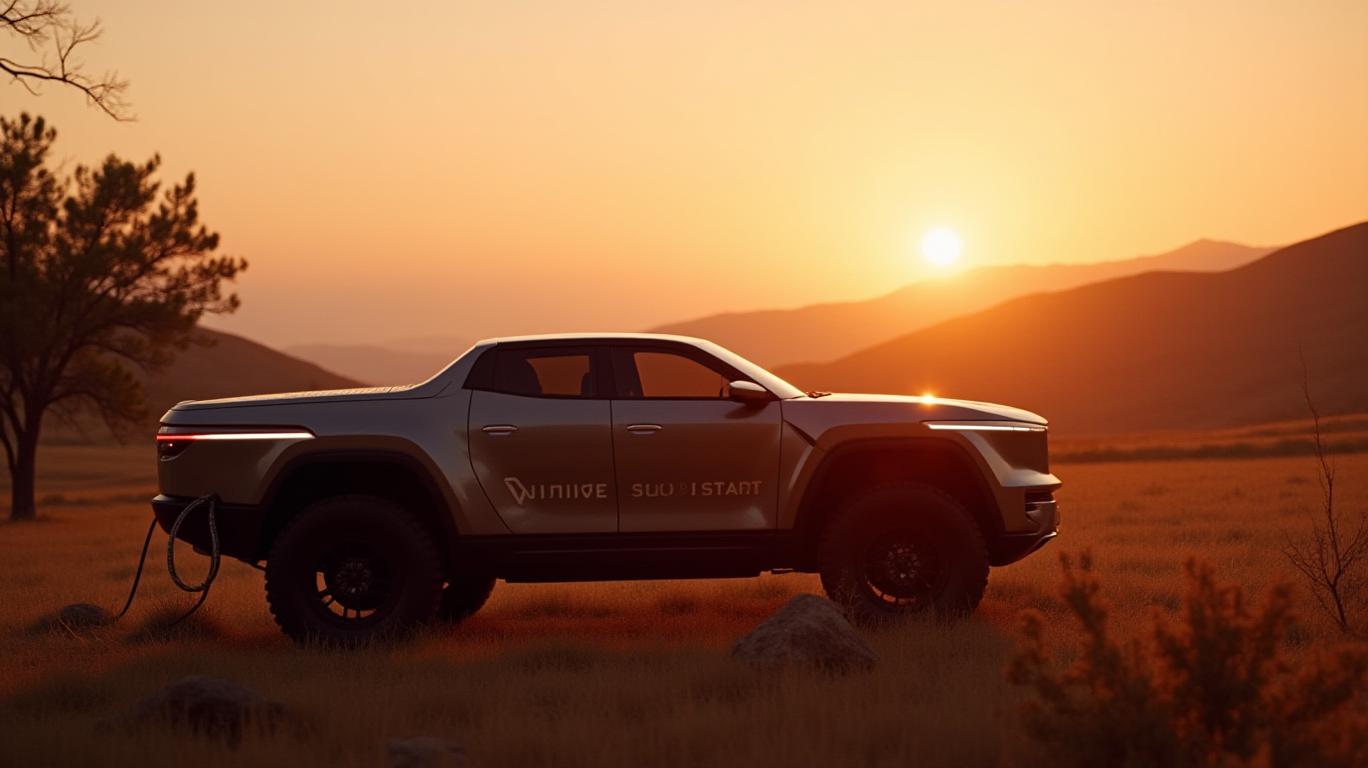Rivian’s Q1 Earnings Preview: Can Tariff Mitigation Stem the Red?
Rivian Automotive’s upcoming Q1 2025 earnings report will be a litmus test for its ability to navigate the storm of U.S. trade policies and rising production costs. With tariffs on automotive parts adding thousands of dollars to its Bill of Materials (BOM), the electric vehicle (EV) maker faces a precarious balancing act: maintaining profitability while scaling production of its R1T/R1S trucks and preparing for the 2026 launch of its smaller R2 SUV. The question investors must ask: Will tariffs push Rivian deeper into the red, or has the company found enough levers to offset the damage?

The Tariff Tsunami: Costs and Compliance
The 25% tariffs on imported auto parts, effective since April 2025 under Proclamation 10908, have reshaped Rivian’s cost structure. While the company’s vehicles are 100% U.S.-assembled, its reliance on non-USMCA-compliant components—particularly batteries from South Korea—leaves it exposed. The U.S. “import adjustment offset” system, which reduces tariffs on parts used in domestic assembly, provides some relief. However, the net cost increase per vehicle remains steep. Analysts estimate tariffs add $4,000–$5,000 per vehicle, even with offsets. For context, Rivian’s Q4 2024 automotive cost of goods sold (COGS) per vehicle dropped to $83,000 from $105,600 in Q1 2024—still far above industry norms.
Q1 Earnings: Progress Amid Headwinds
Rivian’s Q1 results will likely reflect a mix of resilience and vulnerability. Revenue is expected to hit $1.24 billion, surpassing Wall Street’s $983 million estimate—a 12% year-over-year increase driven by Amazon fleet sales and operational efficiency gains. Gross profit should remain positive for the second consecutive quarter, unlocking $1 billion in Volkswagen funding tied to milestones. However, the company’s downward revision of 2025 delivery targets—from 46,000–51,000 to 40,000–46,000—highlights tariff-driven demand risks.
The adjusted EBITDA loss for Q1 is projected at $329 million, narrower than the $546 million consensus, thanks to cost-cutting and supply chain optimization. Yet gross margin remains a red flag: at -38.9%, it lags far behind peers like Tesla (-1.5% in Q1 2024) or Ford (-7.1% in Q1 2025).
The R2: Rivian’s Hail Mary?
The smaller, more affordable R2 SUV—priced at $50,000–$70,000—is critical to reversing Rivian’s fortunes. The model’s 2026 launch, supported by a $1.1 billion expansion of its Normal, Illinois, plant, aims to tap into the mass-market EV segment. However, delays in battery localization pose risks. Rivian’s stockpiling of South Korean-made battery cells (to cover production until 2026) and its plan to shift LG production to Arizona by 2027 are tactical moves, but they may not fully insulate against tariff volatility.
Risks and Regulatory Crosswinds
Rivian’s path to profitability hinges on two unresolved factors:
1. USMCA Compliance: The administration’s pending clarity on exemptions for parts with $16/hour labor standards could reduce costs—or force further revisions.
2. DOE Loan Fate: Rivian’s $6.6 billion loan for its Atlanta plant, now under scrutiny by the Biden administration’s new Department of Government Efficiency (DOGE), could delay its 7,500-job expansion.
Meanwhile, investor sentiment remains shaky. Rivian’s stock has plummeted 70% year-over-year, trading at $13.35—a stark contrast to Tesla’s +24% rise over the same period.
Conclusion: A Tightrope Walk to Profitability
Rivian’s Q1 results will underscore its progress in cost discipline and gross profit milestones. Yet tariffs and regulatory uncertainty loom as existential threats. The company’s ability to:
- Reduce BOM costs through U.S. battery localization,
- Achieve $5 billion in annual gross profit by 2026 (as outlined in its joint venture with VW), and
- Successfully launch the R2 at a price point that attracts mass-market buyers,
will determine whether it escapes the red.
The numbers tell the story:
- $4,000–$5,000 per vehicle tariff costs vs. a Q1 2025 automotive gross profit of $92 million (on 14,611 units).
- A $1.7 billion–$1.9 billion 2025 adjusted EBITDA loss suggests sustained losses through 2025.
Investors should brace for volatility. While Rivian’s long-term vision—leveraging U.S. manufacturing and AI-driven tech—has merit, the next 12 months will test whether its tariff mitigation strategies can outweigh the headwinds. The answer will shape its survival in an increasingly crowded EV market.

Comments
No comments yet